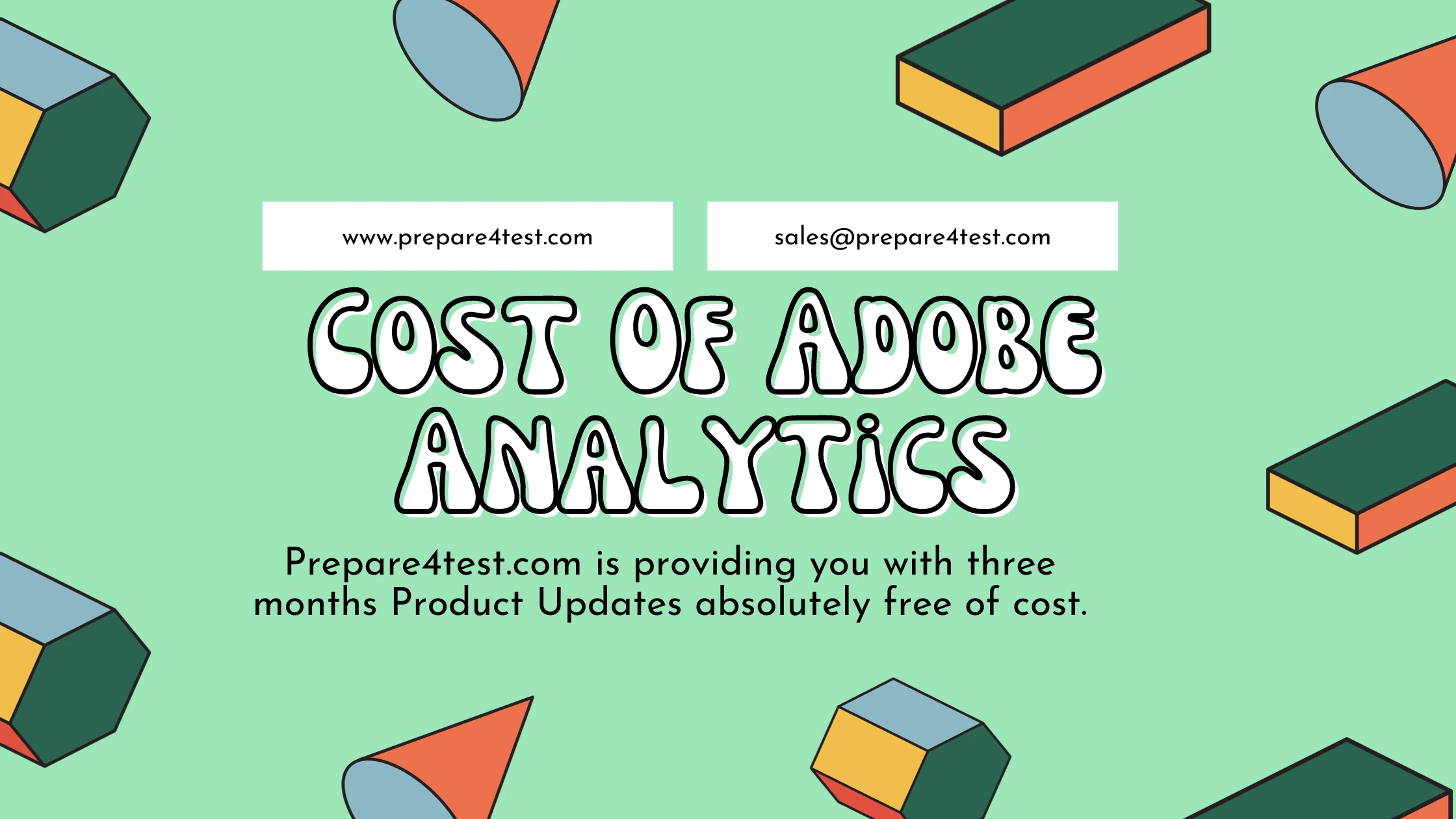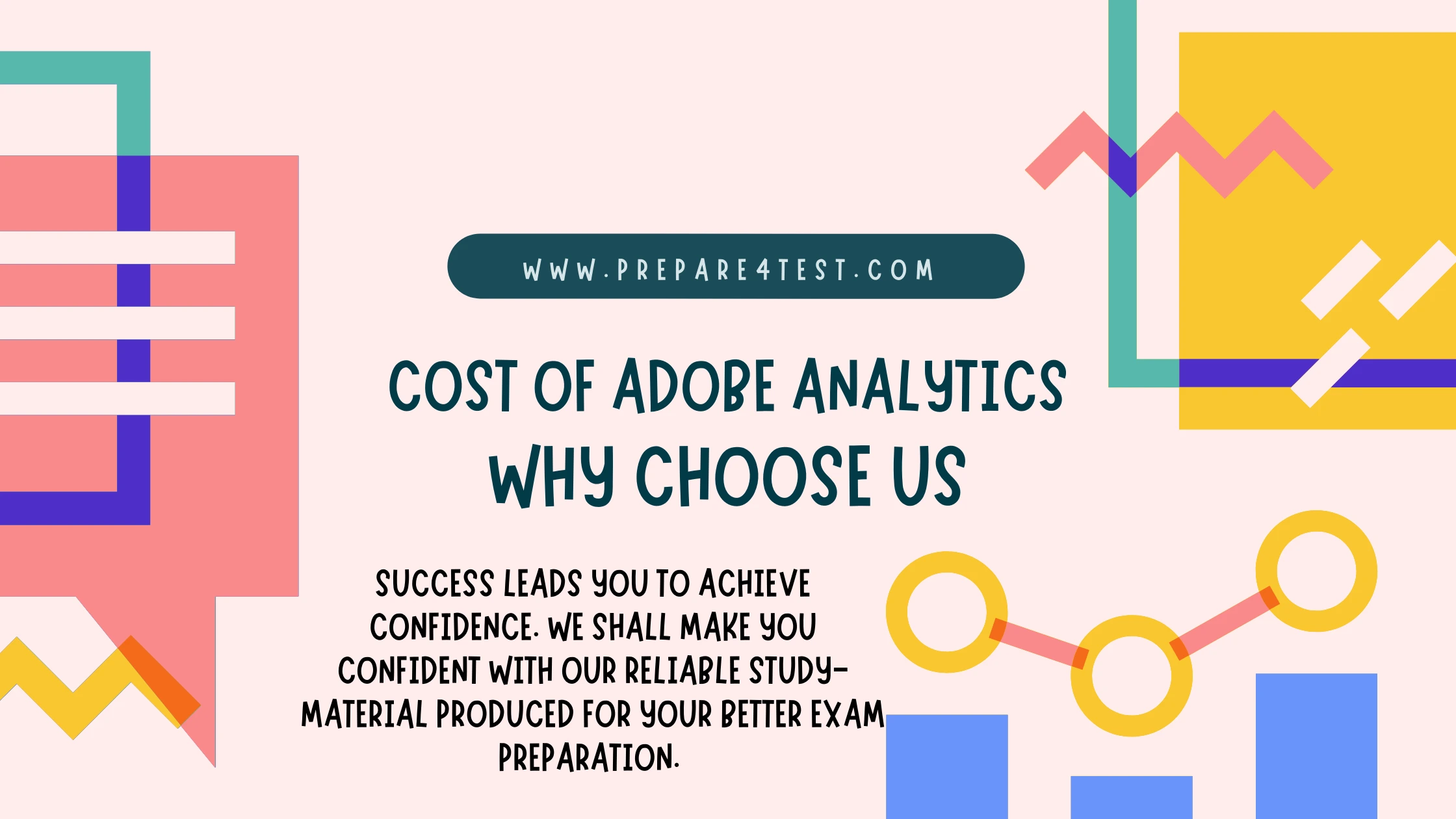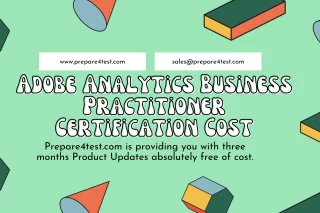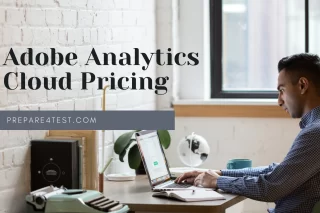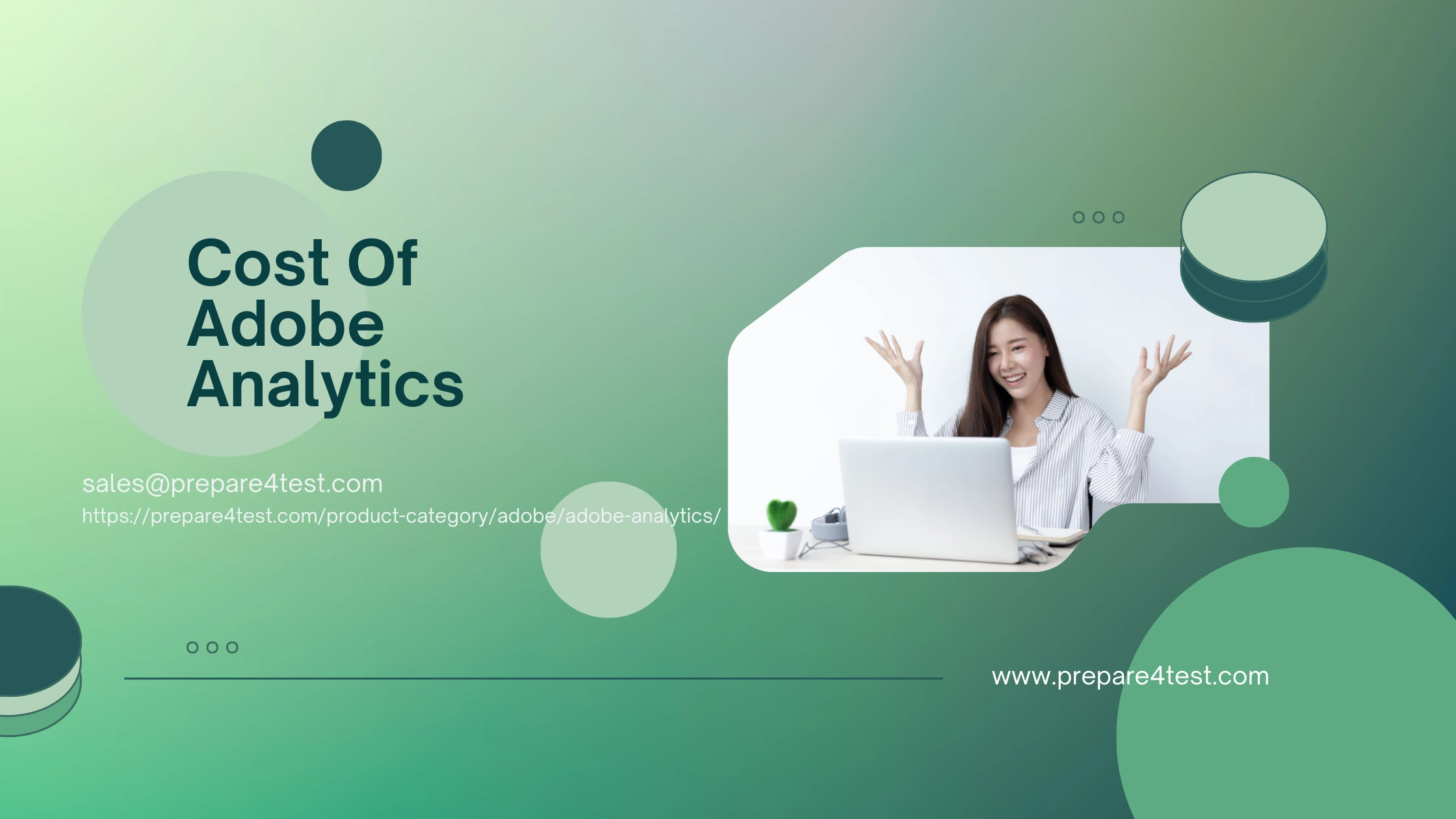
Adobe Analytics is a powerful web analytics platform that provides detailed insights into website traffic, customer behavior, marketing performance, and more. It is part of the Adobe Experience Cloud suite of products.
Explanation of Adobe Analytics
Adobe Analytics collects data across websites, mobile apps, Internet of Things (IoT) devices, and other sources to build a holistic view of the customer experience. It leverages artificial intelligence and machine learning to automatically surface insights.
Key capabilities include segmentation, attribution, anomaly detection, contribution analysis, and integration with data science platforms.
Importance of understanding the cost of Adobe Analytics
While Adobe Analytics offers robust capabilities, it comes at a cost. Adobe Analytics pricing is complex with costs varying based on number of report suites, volume of server calls, data retention period, and add-on capabilities. Entry-level pricing starts around $10,000 per year, with typical implementations costing $100,000 or more annually.
Understanding the full cost model is critical for budgeting purposes and ensuring maximum return on investment. Factors like required functionality, in-house analytics skills, and integration needs should guide cost analysis.
Weighing alternative tools like Google Analytics 360 and developing a phased rollout plan can also optimize costs. Selecting the right Adobe Analytics edition and negotiating contracts carefully further enables cost efficiency.
What is Adobe Analytics?
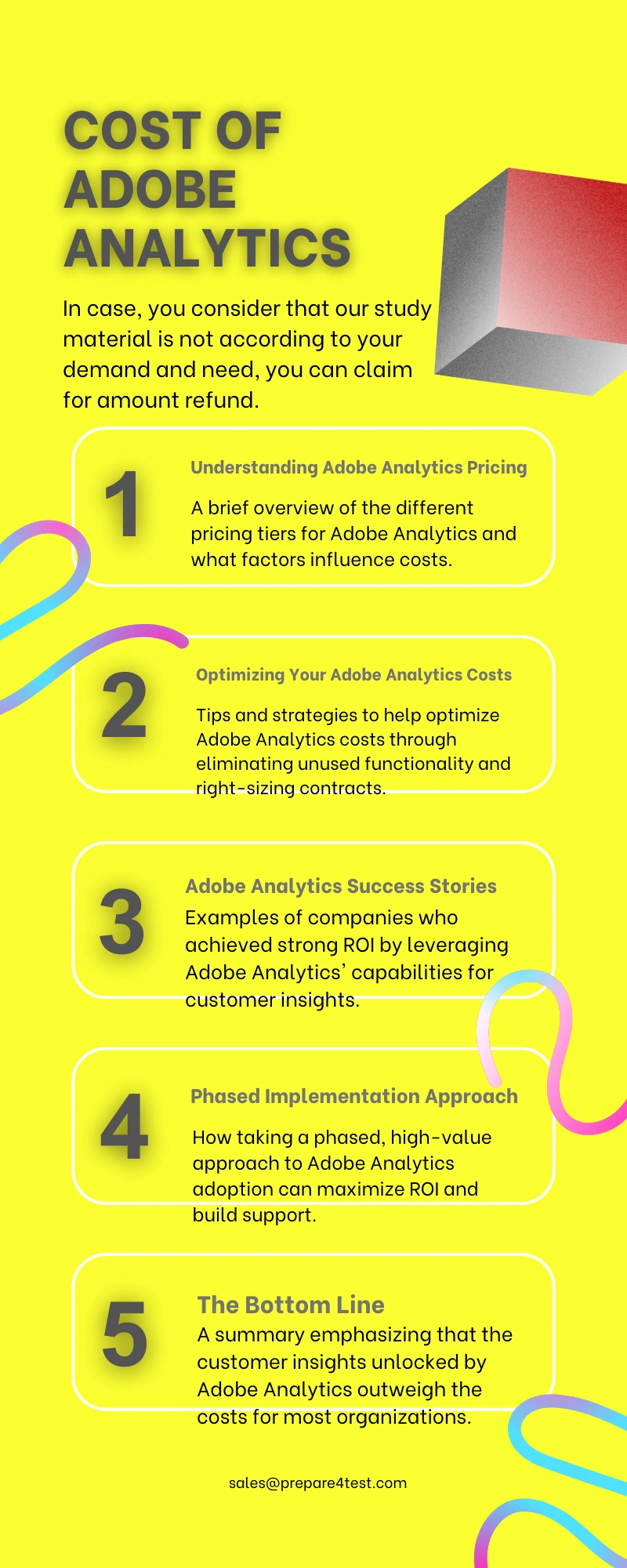
Adobe Analytics is a powerful web and marketing analytics platform that is part of Adobe Experience Cloud.
It collects and analyzes data from websites, mobile apps, Internet of Things devices, and other sources to build a comprehensive view of the customer experience.
Overview of Adobe Analytics features and benefits
Key capabilities of Adobe Analytics include segmentation, attribution modeling, anomaly detection, predictive analytics, and integration with data science platforms.
It provides marketers with adobe marketing analytics insights through features like custom dashboards, contribution analysis, and detailed reporting.
Benefits include accelerated time-to-insight, increased marketing ROI, improved customer experiences, and the ability to optimize campaigns and experiences in real time.
How Adobe Analytics helps businesses make data-driven decisions
By consolidating data from across channels and applying advanced analytics, Adobe Analytics empowers businesses to make better data-driven decisions.
Marketers can identify high-value customer segments and optimize targeting. Product teams can analyze behavior flows to improve user experiences. Executives gain a comprehensive view of performance.
Adobe Analytics enables organizations to track ROI on campaigns and initiatives, attribute conversions to touchpoints, uncover emerging trends and opportunities, and continually optimize based on statistical evidence.
With predictive analytics capabilities, businesses can even anticipate future outcomes. The insights unlocked by Adobe Analytics ultimately help drive growth through data-informed strategy and decision making.
Pricing Structure of Adobe Analytics
Adobe Analytics is offered in three pricing tiers based on features – Select, Prime, and Ultimate. The entry-level Select package starts at $10,000 per year with basic reporting capabilities.
Prime supports advanced analysis with additional metrics and segments at $70,000 annually. The Ultimate tier has the full suite of enterprise features like predictive analytics and offline data integration for over $150,000 per year.
Factors that influence the cost of Adobe Analytics
Several variables impact Adobe Analytics pricing. The number of report suites, volume of server calls, data retention period, and required add-on capabilities all contribute to costs.
Companies with multiple brands, websites, or geographic markets need multiple report suites at additional expense. High traffic sites generating over 100 million monthly server calls require custom enterprise contracts.
And enabling premium features like Audience Manager or predictive intelligence adds further licensing fees.
Comparison with other analytics platforms in terms of pricing
Relative to enterprise alternatives like Google Analytics 360 and Adobe owns Customer Journey Analytics, Adobe Analytics is more affordable at the low end but can still scale to high six-figure contracts.
Open source tools like Matomo provide free basic analytics, while solutions like Mixpanel and Amplitude compete on price in the mid-market with custom reporting and data science functionality that starts under $50,000 per year.
How to Determine the Cost of Adobe Analytics
There are several key factors to consider when estimating the cost of an Adobe Analytics implementation:
Factors to consider when estimating the cost
Number of users and their roles
Named users with different access levels like Viewers, Report Builders and Administrators add licensing fees. Budget for enough seats and roles to cover your analytics team.
Volume of data processed
High traffic sites generating over 100 million monthly server calls require custom enterprise contracts versus standard pricing. Estimate your site traffic and peak volumes.
Additional modules or add-ons required
Enabling premium capabilities like Audience Manager, Attribution IQ or Predictive Intelligence requires additional licensing costs per report suite. Define your feature requirements.
Examples and scenarios to calculate the cost
A typical mid-size Adobe Analytics setup with 5 Report Builders, 10 Viewers and 2 Admin Users across 3 Report Suites with standard data volumes and basic functionality may cost around $150,000 per year.
On the enterprise side, an implementation with over 1 billion monthly page views across 10 sites and applications with addons like Customer Journey Analytics and data science integration could easily exceed $500,000 annually.
Carefully evaluating usage volumes, growth projections, feature needs and commercial terms is imperative to arrive at an accurate Adobe Analytics cost estimate.
Benefits of Investing in Adobe Analytics
Improved marketing effectiveness and ROI
Adobe Analytics provides deep insights into marketing performance, enabling businesses to optimize campaigns and touchpoints. By leveraging capabilities like contribution analysis and attribution modeling, marketers can identify high-ROI channels and reallocate budgets to maximize returns.
Studies show analytics-driven organizations achieve 2-3x greater returns on marketing spend.
Enhanced customer experience and personalization
With its advanced segmentation and predictive analytics capabilities, Adobe Analytics allows businesses to create targeted customer experiences across channels.
Companies can develop personalized web experiences, mobile apps, email campaigns, and more tailored to individual needs and preferences. This drives increased engagement, satisfaction, and loyalty.
Real-time data insights for better decision-making
Adobe Analytics offers real-time reporting and alerts, empowering businesses to respond rapidly to emerging trends and opportunities. Rather than waiting for static monthly reports, managers can access data-driven insights on-demand to guide day-to-day decisions.
With predictive analytics, organizations can even anticipate future outcomes and proactively adapt strategies using artificial intelligence and machine learning.
By providing omniture adobe analytics across digital touchpoints, Adobe Analytics enables data-informed marketing, enhanced customer experiences, and agile decision making for competitive advantage.
The insights unlocked deliver significant return on investment for most organizations.
Tips for Optimizing the Cost of Adobe Analytics
Identifying and eliminating unnecessary data collection
Carefully audit existing data streams and remove any unused reports, metrics, or dimensions. Reducing unnecessary adobe analytics pricing data collection lowers server call usage and cost.
Utilizing built-in tools and features effectively
Leverage out-of-the-box capabilities like contribution analysis before enabling expensive add-ons like predictive intelligence. Focus on adopting included features before paying for upgrades.
Regularly reviewing and adjusting usage and pricing plans
As needs change, reassess usage monthly and adjust plans accordingly. Switch to lower tiers or fewer capabilities when suitable rather than overpaying. Consider annual subscriptions over month-to-month for better rates.
Adobe Analytics pricing is driven by data volume, users, capabilities, and contract terms. Businesses can optimize costs by tracking usage closely, eliminating unused functionality, and reassessing needs regularly.
Work with Adobe reps to right-size contracts and find available discounts. The savings from optimized Adobe Analytics costs can be reallocated to other high-ROI digital marketing and analytics initiatives.
Case Studies: Companies and their Experience with Adobe Analytics
Success stories of businesses using Adobe Analytics
A global toy retailer used Adobe Analytics consulting to diagnose issues with their mobile website conversion rates before the critical holiday season. By comparing analytics data to sales data, they isolated the problem to the checkout process.
Implementing field tracking uncovered specific drop-off points. With quick fixes before the code freeze, conversion rates and holiday sales significantly increased.
Another retailer leveraged Adobe Analytics’ segmentation and analysis capabilities to identify high-value customer cohorts.
By creating targeted email campaigns for these segments, they drove a 5% lift in email revenue. Their success demonstrates how actionable insights from Adobe Analytics can optimize marketing performance.
How they optimized costs and achieved desired outcomes
These examples show that careful analysis of Adobe Analytics data uncovers high-impact optimization opportunities. Rather than paying for unused capabilities, the toy retailer focused budget on consulting services to fix a revenue-critical issue.
The retailer targeting customer segments optimized costs by only collecting essential data fields, not enabling unnecessary reports.
Carefully auditing data needs, eliminating unused functionality, and investing in high-ROI analysis drives value.
For most organizations, the customer and revenue insights unlocked dramatically outweigh Adobe Analytics costs. Ongoing optimization and showcasing quick wins also builds support for the analytics program over time.
Conclusion
Determining the true cost of adobe analytics requires careful analysis of an organization’s specific needs and use cases.
While pricing starts around $10,000 annually, typical implementations often cost over $100,000 per year when factoring in traffic volume, number of users, required capabilities, and contract terms.
Companies can optimize costs by eliminating unnecessary data streams, focusing on included functionality first, and regularly reviewing usage and pricing plans.
For most organizations, the customer insights unlocked by Adobe Analytics deliver significant ROI that far outweighs the expense. Approaching implementation with a phased, high-value analytics strategy enables maximizing this ROI.
With the right approach, Adobe Analytics provides enterprise-grade analytics and actionable intelligence that drives competitive advantage.
Citations:
https://business.adobe.com/cz/products/advertising/performance-optimization.html https://business.adobe.com/products/analytics/adobe-analytics.html
